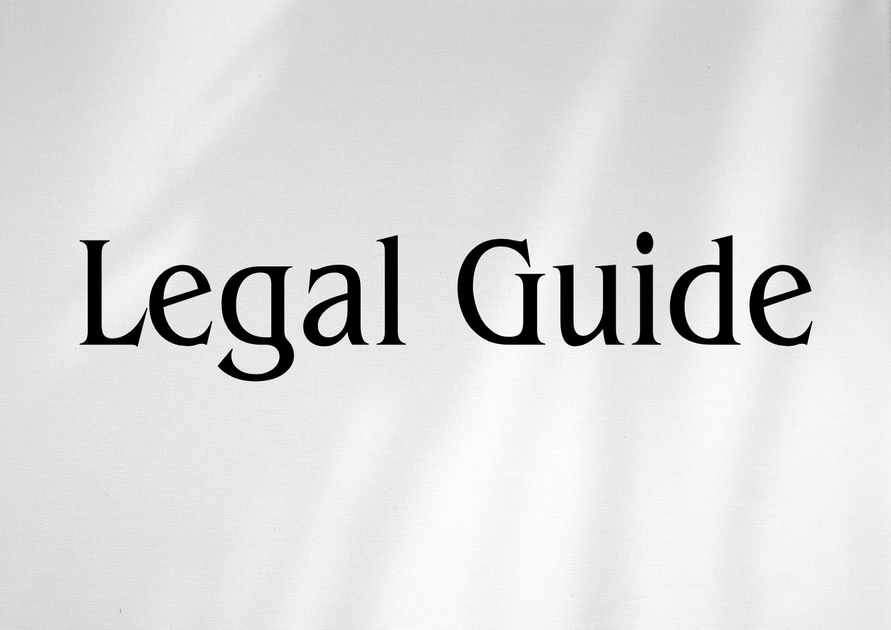Introduction: Navigating Airport Security Compliance in Qatar
In today’s interconnected global economy, air transport forms the backbone of international business, trade, and tourism. For entities operating in or with Qatar’s aviation sector, robust airport security compliance is not just a regulatory obligation; it is a linchpin for safety, reputation, and commercial success. Recent international developments and an evolving regulatory landscape in the GCC, including updates under UAE Law 2025 and tightening harmonisation across the region, have driven a renewed focus on airport security compliance within Qatar. UAE-based executives, compliance officers, legal practitioners, and HR managers must diligently track these requirements, not merely for reason of legal conformity—but for their far-reaching impact on cross-border business, travel, and risk management strategies.
This in-depth analysis explores the pivotal legal instruments, compliance duties, enforcement mechanisms, and practical ramifications of Qatar’s airport security compliance regime, comparing these with the evolving UAE standards, to equip stakeholders with actionable legal insights and risk mitigation strategies.
Table of Contents
- Qatar’s Airport Security Legal Framework
- Key Airport Security Regulations and Provisions
- Comparison Between Qatar and UAE Requirements: Old vs. New
- Roles, Oversight, and Stakeholder Accountability
- Case Studies: Compliance in Action
- Penalties and Risks of Non-Compliance
- Best Practice Compliance Strategies
- Future Trends and Legislative Developments
- Conclusion: Staying Ahead of Airport Security Compliance
Qatar’s Airport Security Legal Framework
Overview of Core Laws and International Standards
Qatar’s airport security regime is constructed on a foundation of domestic regulatory decrees, ministerial resolutions, and international obligations. The principal legal sources include:
- Law No. 15 of 2002 on Civil Aviation, as amended, which stipulates national aviation security duties and gives effect to ICAO Annex 17 standards on safeguarding international civil aviation.
- Ministerial Resolution No. 20 of 2018 on Airport Security Measures, which operationalises security duties for airport operators, ground handlers, airlines, and critical infrastructure providers.
- Qatari National Civil Aviation Security Programme (NCASP), the comprehensive policy blueprint harmonised with the International Civil Aviation Organization (ICAO) Annex 17.
Qatar is a signatory to the Chicago Convention and is subject to its key security amendments, including recent updates (2021-2024) mandating stronger responses to emerging threats such as cyber terrorism, insider risks, and the use of technology in security screening. These legal instruments are enforced by the Qatar Civil Aviation Authority (QCAA), which partners closely with international and GCC counterparts—including significant regulatory consistency initiatives with the UAE GCAA.
Why This Matters for UAE Stakeholders
For airlines, logistics companies, HR professionals, and multinational employers engaged in Qatar or transiting through Qatari airspace, these regulations are not academic. Cross-border operations, code-share agreements, and multi-jurisdictional staffing expose UAE-based businesses to liability risks. UAE Law 2025 updates and federal decrees emphasise the importance of regional security alignment, making it essential for UAE firms to maintain dual compliance – adhering to both home law and Qatari obligations.
Key Airport Security Regulations and Provisions
Key Components of Qatar’s Security Compliance Requirements
The following categories encapsulate the core obligations:
- Access Control and Identity Management: Detailed verification for airside entry, use of biometric authentication and strict permit issuance for all staff, as required under Ministerial Resolution No. 20/2018.
- Passenger and Baggage Screening: State-mandated screening protocols using advanced X-ray and explosive trace detection, as per international Annex 17 standards and QCAA circulars (2023 updates on screening algorithms).
- Cargo and Mail Security: Mandatory cargo screening, regulated supply-chain processes, and vetting in line with the National Supply Chain Security Programme (NSCSP) and ICAO specifications.
- Insider Threat Mitigation: Periodic background checks for all airport and airline personnel with airside access; continuous monitoring systems; joint risk assessment with security agencies.
- Cybersecurity Protocols: Network segmentation for critical infrastructure, as stipulated in QCAA 2024 guidance on aviation cyber risks (a growing area of regulatory scrutiny mirrored in UAE Cabinet Resolution No. 21 of 2022 on Critical Infrastructure Cybersecurity).
- Reporting and Incident Response: Immediate notification and mandatory reporting of security breaches, pursuant to Law No. 15/2002 and recent QCAA directives (2023 amendments).
Consultancy Insights: Applying the Law in Practice
Airline HR executives must ensure background checks are both compliant and current, particularly for expatriate staff hired from outside Qatar. Ground handling agents are advised to implement layered access control—biometric plus multi-factor authentication to meet or exceed the latest 2024 guidelines. Legal departments should document all screening procedures and training, preparing for unannounced QCAA audits which can invoke sanctions for even minor lapses.
Comparison Between Qatar and UAE Requirements: Old vs. New
The Shifting Compliance Landscape
Both Qatar and the UAE have recently enacted updates to harmonise their airport security regimes, especially around cyber threats and identity management. Below is a comparative summary highlighting key regulatory evolutions:
| Requirement | Qatar (Pre-2018) | Qatar (2024/2025) | UAE (Pre-2021) | UAE (2025 Updates) |
|---|---|---|---|---|
| Access Control | ID cards, manual checks | Biometric, digital flow, AI monitoring | Simple coded badges | Facial recognition, e-gates, AI analytics (Federal Decree No. 10/2023) |
| Cargo Screening | Random inspection, paperwork | Full screening, blockchain-tracking | Weight-criteria reviews | Real-time IoT monitoring, digital manifests |
| Cybersecurity | Not codified | Dedicated protocols (QCAA Guidance 2024) | Ad hoc IT controls | Mandatory, certified frameworks (Cabinet Resolution 21/2022) |
| Insider Threat | Occasional record checks | Continuous vetting, automated alerts | Annual HR vetting | Risk-based monitoring, centralized reporting |
Visual Recommendation
Suggested Visual: Comparative chart of regulatory evolution for Qatar and UAE (2018-2025), showing key milestones and advances. This provides a quick reference for compliance managers tracking obligations across both jurisdictions.
Roles, Oversight, and Stakeholder Accountability
Institutional Responsibilities
- Qatar Civil Aviation Authority (QCAA): Main oversight agency, empowered to conduct compliance inspections, enforce administrative sanctions, and coordinate with international regulators.
- Airport Operators: Implement comprehensive security programmes, mitigate on-site risks, and train personnel per QCAA and ICAO standards.
- Airlines and Charter Operators: Responsible for passenger and baggage screening, staff vetting, and implementing security directives across all operations.
- Ground Handlers and Service Providers: Must adhere to airport-wide security policies, with potential joint liability for breaches.
Accountability and Liability
Legal liability is multi-layered: not only are entities responsible for their own staff and processes, but also for those of contractors and service providers under their operational control. Underpinning this is a due diligence framework—comparable to the standard imposed under UAE Labour Law (Federal Decree Law No. 33 of 2021, as amended by Law No. 20 of 2023)—which requires employers to conduct ongoing compliance reviews, report suspicious activity, and participate in risk assessments.
Case Studies: Compliance in Action
Hypothetical Scenario 1: HR Background Check Compliance
Situation: A UAE-headquartered airline recruits ground staff for a new Doha service. The HR department conducts standard UAE-level background checks but omits the Qatari-mandated periodic renewal.
Consequence: During a QCAA spot audit, documentation discrepancies are found. The airline faces a QAR 150,000 administrative penalty and temporary suspension from airside operations.
Recommendation: Adopt a multi-jurisdictional vetting protocol and automate reminders for renewal of all compliance-related credentials.
Hypothetical Scenario 2: Cybersecurity Breach
Situation: An airline inadvertently allows a third-party IT vendor with insufficient controls to access airport wi-fi. Malware infiltrates flight scheduling systems.
Consequence: Data leak disrupts operations, results in a QCAA fine, and triggers civil liability to affected passengers and counterparties.
Recommendation: Require all vendors to provide compliance certifications per QCAA and UAE Cabinet Resolution standards. Conduct regular penetration tests and cybersecurity awareness training.
Visual Recommendation
Suggested Visual: A process flow diagram showing steps for vetting, onboarding, and overseeing staff and third-party providers; annotated legal touchpoints for Qatari and UAE requirements.
Penalties and Risks of Non-Compliance
Regulatory Sanctions
Under Law No. 15/2002 (as amended) and QCAA enforcement notices, penalties for non-compliance can be severe:
- Fines ranging from QAR 50,000 to QAR 500,000 per violation
- Suspension or revocation of airport access permits
- Temporary or permanent bans on operational activities
- Civil damages for negligence or breach of duty
- Potential criminal liability for knowing or reckless breaches involving national security
Indirect Risks
Beyond fines, exposure includes reputational harm, disqualification from international partnerships or codeshares, and insurance coverage exclusion. For UAE-based entities, breaches in Qatar can trigger bilateral reporting, affecting licensing and regulatory standing in the UAE under recent GCAA circulars.
Risk Management Table
| Risk Category | Potential Impact | Mitigation Strategy |
|---|---|---|
| Regulatory Fine | Financial and operational loss | Regular compliance audits, robust file management |
| Reputational Damage | Loss of business partners | Proactive breach reporting, transparent remediation |
| Operational Suspension | Service delays, revenue loss | Emergency response planning, staff cross-training |
Best Practice Compliance Strategies
1. Integrated Compliance Management
Develop centralised platforms to document and update all security-related processes, accessible to both UAE and Qatari compliance teams. Link renewal deadlines for credentials to automated reminders and audit checklists. Cross-train staff on both jurisdictions’ requirements.
2. Continuous Legal Horizon Scanning
Stay abreast of updates from:
- Qatar Civil Aviation Authority (QCAA) official website
- UAE General Civil Aviation Authority (GCAA) official website
- Relevant sections of the UAE Ministry of Justice (Federal Legal Gazette updates)
Nominate a legal correspondent to monitor, interpret, and disseminate regional updates as part of an internal compliance bulletin.
3. Proactive Stakeholder Training
Conduct scenario-based training for all personnel accessing Qatari airports. Supplement generic e-learning with case studies focused on technological and procedural updates introduced in 2024 and anticipated for 2025.
4. Strong Vendor Due Diligence
Mandate that all contractors and vendors provide proof of compliance with both QCAA and UAE standards—especially for high-risk functions such as IT, cleaning, and baggage handling.
- Require indemnity undertakings covering potential non-compliance fines.
- Perform ongoing contract audits, leveraging AI-based monitoring tools where feasible.
5. Crisis & Incident Response Preparation
Establish clear reporting lines, response timelines, and remediation checklists. Regularly test incident response plans via desktop and live drills. Maintain a legal rapid-response team able to assess sanction exposure and manage regulator relations on short notice.
Future Trends and Legislative Developments
Anticipating Policy Evolution
Emerging Focus Areas:
- Integration of AI and Advanced Analytics: Ongoing legislative activity points to further mandates for biometric, AI-driven screening, and anomaly detection—mirroring the UAE’s Decree No. 10/2023.
- Cross-Border Data Sharing and Privacy: With greater use of digital traveler identities, expect new privacy regulations, echoing the UAE’s Federal Decree Law No. 45/2021 on Personal Data Protection.
- Climate and Sustainability Compliance: Upcoming requirements may address the environmental impact of security processes—an area flagged in both Qatari and UAE policy consultations.
Suggested Visual: Roadmap of predicted policy changes impacting GCC aviation security through 2025 and beyond, pinpointing key compliance milestones for business planning.
Recommendations for UAE-Based Operators
- Establish direct compliance liaisons with QCAA and UAE GCAA risk management teams.
- Regularly review and update contractual provisions to reflect evolving airport security laws in both jurisdictions.
- Monitor international security threats and adapt local policies accordingly.
Conclusion: Staying Ahead of Airport Security Compliance
The airport security legal environment in Qatar is dynamic, driven by heightened global risks and a sustained drive for regulatory alignment with international and GCC benchmarks. For UAE-based businesses and professionals, the stakes extend beyond mere regulatory fines: effective compliance safeguards business continuity, brand reputation, and essential market access.
Key takeaways for legal and business leaders include the imperative to maintain up-to-date knowledge of both Qatari and UAE mandates, invest in technology and contractor oversight, and implement a holistic risk management approach. Given the convergence of laws and practices across the region—especially in light of major legal updates such as UAE Law 2025 and QCAA’s 2024/2025 guidance—proactive compliance is no longer optional, but an operational and fiduciary necessity.
By adopting a forward-looking compliance posture, supported by regular legal consultation and institutional risk readiness, stakeholders can ensure resilience and sustained competitiveness in a rapidly changing regulatory environment.




